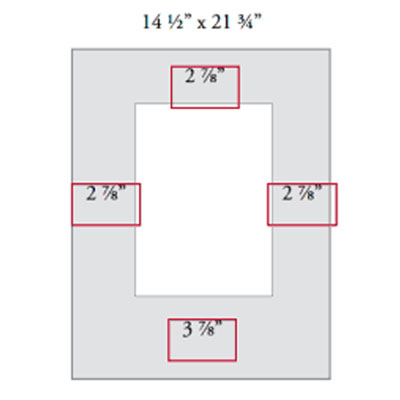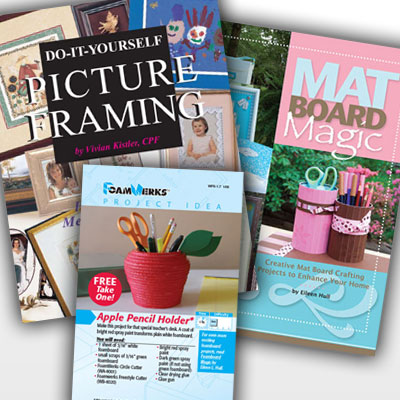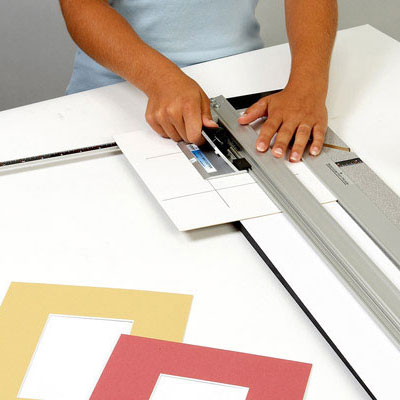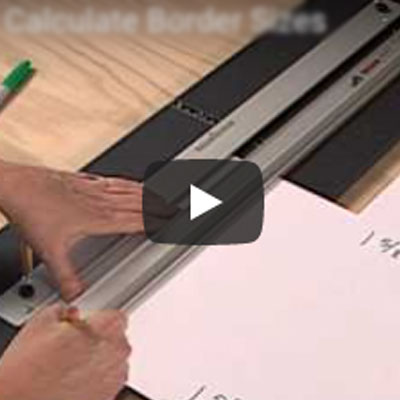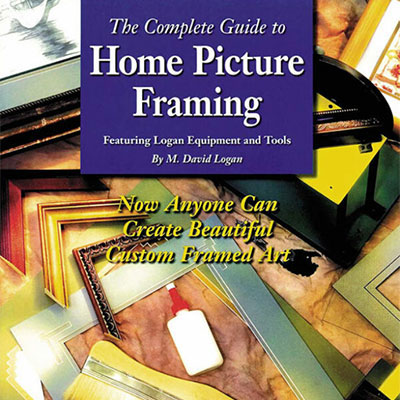The term "frame fitting" refers to that part of the framing process where the contents are secured in the frame.
The preferred method for securing contents in a frame is to use points. Points are sometimes called inserts (they're the same thing). If you are unfamiliar with points think of the metal tabs found at the back of a gift frame, the ones you can bend up to get the promotional contents out so you can put your own picture in.
Those points are called flexible points because they are easily bent. Most professional framers, however, use rigid points because they are thought to be more secure and because most professionals cover the back of the frame with a paper dust cover anyway, making the points virtually inaccessible, thus no need to bend them.
Points versus Brads
Some framers still use brads. Brads are small wire nails. Before points were invented, brads were used by hammering them into the inside wall of the frame recess. Driving brads with a hammer was a problem, however, because they had to be driven at an angle which didn't provide much holding area on the back of the contents. The solution was a brad nailer, a gun that drove the nails perpendicularly into the inside of the frame recess.
Although some framers still prefer brads, most have traded up to points. Even though they can now be driven at a proper right angle, brads don't provide much of a holding area. The main advantage of a point is that it is flat instead of round and covers a broader area against the surface of the stack.
The most important tool you can buy for framing is a mat cutter. Arguably the second most important tool is a point driver. The majority of frames are wood. Unlike metal frames, the means by which you hold contents in a wood frame are not provided with the frame. In those cases, you must use points. Bottom line: you will probably use points most of the time. You should own a fast, easy, reliable tool to insert them.
Fitting Tool versus Point Driver
Logan offers an inexpensive point squeezing device that works on the principal of a vise called a "The Frame Fitting Tool". In the Logan Frame Fitting Tool the points are loaded one point at a time and adjusted to the width of the frame. When the handle is squeezed, the jaws close, squeezing the point into the inside wall of the frame recess. A vising tool like this is not recommended for hardwood frames like oak and maple, and unless adjusted properly will hang up on the point, requiring the user to readjust after each point is inserted.
When framers get to the end of the frame job and can see the matted, glazed artwork in the frame, most want to be finished. Most framers prefer a point driver.
Vise-style point inserting tools do have one advantage over point drivers, however. Because they squeeze the point rather than fire it, they are preferred by framers working with loose media like pastels or charcoals where the jarring that a point driver involves can cause loose granules to shake off the face of the artwork. In all other circumstances, however, a point driver is preferred.
The Best Tool for the Job
Picking up on the concept of a brad nailer, a point driver drives the point perpendicularly into the inside wall of the recess. They are spring-loaded and have tensioning knobs that can be adjusted to increase the drive strength to penetrate hardwoods or softwoods. They are magazine loaded, meaning the points come in a stack and the whole stack is loaded into the gun.
When the gun is triggered, a single point is fired off the bottom of the stack and the next in line is aligned in the breach. Point drivers are fast and efficient. What might take several minutes with a vising tool is accomplished in seconds with a point driver.
By carefully considering your options and making the right decision you will insure a a satisfying experience when it comes to securing the contents in a frame.






